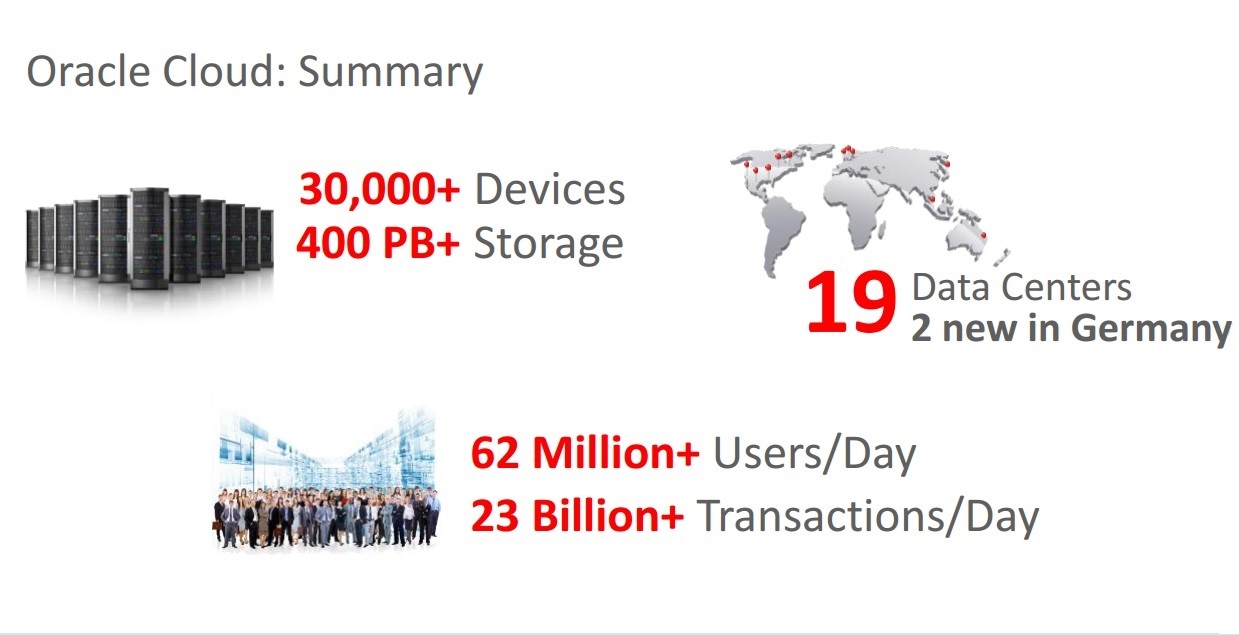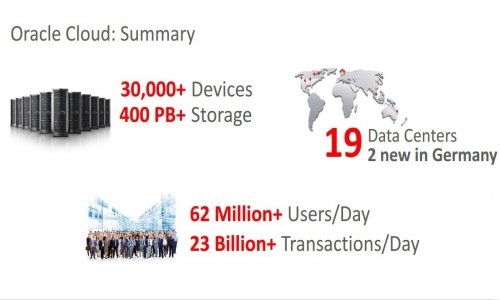
Oracle's recent OpenWorld event provided a platform for new announcements, some about the company and some on the technology. Oracle's cloud attracted interest as it works as SaaS, Platform as a Service and infrastructure as as service. Databases remains its biggest software business and will be its biggest cloud sector, it says, but the key selling point is its ability to switch Oracle databases and applications into the cloud and out again, a feature it says is unique.

How can Oracle's channels make the transition to cloud, IT Europa asked Will O'Brien, VP Alliances and Channels, UK&I. He talked about how the channel was changing: “We are seeing a rise in channel's influence revenue and while there are winners and losers, winners can see quite dramatic rises in revenues if they pick areas that are complementary to what they do. The secret of my team is find areas of the Oracle economy that are complementary to what they do. Many partners are potentially competitive to us – it means finding joint areas of good opportunity. Smaller partners are certainly becoming more specialist, and most are looking at a move to SaaS.”
“In the UK we have 1100 OPN (Oracle Partner Network) registered partners, but there are three tiers – traditional partners in systems or storage, and we have to find their adjacent markets. Then , in the boutique space, which we have largely inherited through acquisition, we have a broad network of application houses, that have been on-premise experts. We are find that they are moving to SaaS, which is a logical thing to do. The third area is the formation of alliances, often without Oracle involved, where a boutique SaaS provider will partner with a larger integrator on, for example, a major HR project. We have created specialisations, and encourage sharing. In the modern world, no one partner can keep up with everything. So they have look at alliances.”
“We have a single alliance and channels business, so a single team means across everything from integrators to technology fulfilment partners – the whole breadth and a review every quarter looks at how they are developing. Because we have visibility of very partner, I get the opportunity to suggest alliances that might be good, with all the organic groupings as well.”
What does this mean for distribution? “Historically the distributors have been in technology and systems distribution, but now there is interest in distributing SaaS. That is unique, when you look at all the traditional distributors. Oracle is unique in covering everything, so is a great opportunity as the value in distributing the application portfolio gets you closer to the customer. The core competency of a distributor is to manage the long tail of partners, our job is to educate them on a high level on what we offer.”
“What we have seen already is great appetite in Arrow and Avnet in taking our technologies and investing in workshops for their VARs with education sessions. We have to give them the tools to train partners on our behalf.”
“It is quite an interesting period in the channel, there are a lot of large companies out there who have built their proposition on distributing one of the key vendors, but a lot of the manufacturers seem to be having flattening to deteriorating server revenues for some time. A business of €100m operating on margins of 3%-5% and with all those margins are being attacked because the distributors get tighter with the margins on offer, then this can quickly take a business on 3% into a loss.”
But then could Oracle's engineered systems be overtaken by fast architectures running on commodity hardware? “I was at Stanford University recently and spoke with the professor of the computing faculty. I asked him if the Far East techs could catch the US companies? His reply was that the environment in California is acting as a magnet for the rest of the planet. 60% of his graduates were not from California, with a lot of international students. A combination of great talent, a balanced approach to risk taking and a venture capital community used to start-ups. So yes you could have technology from another part of the world, but innovation comes from a series of levers – talent, investment, financial infrastructure and all the support services – legal, real estate etc.”
Oracle is close to this, he says. “What we are doing with chips, taking software into silicon, is just one example of how a technical innovator can stay ahead.”